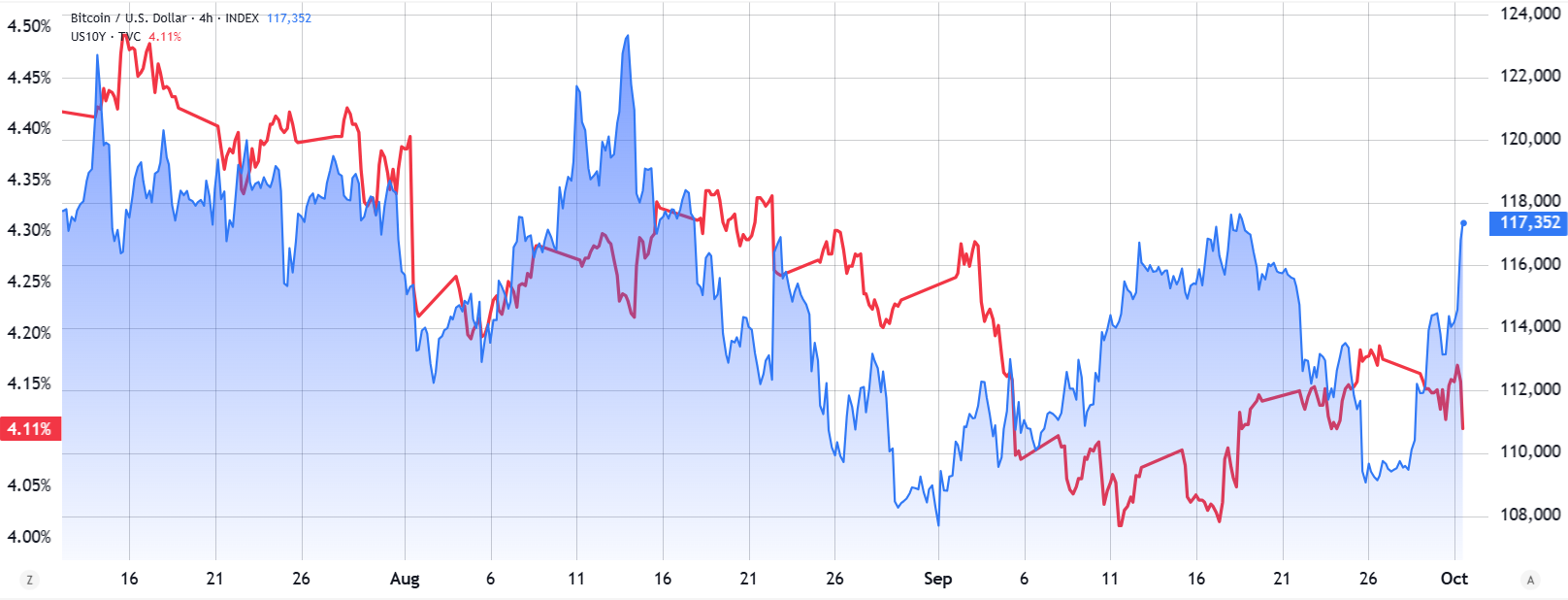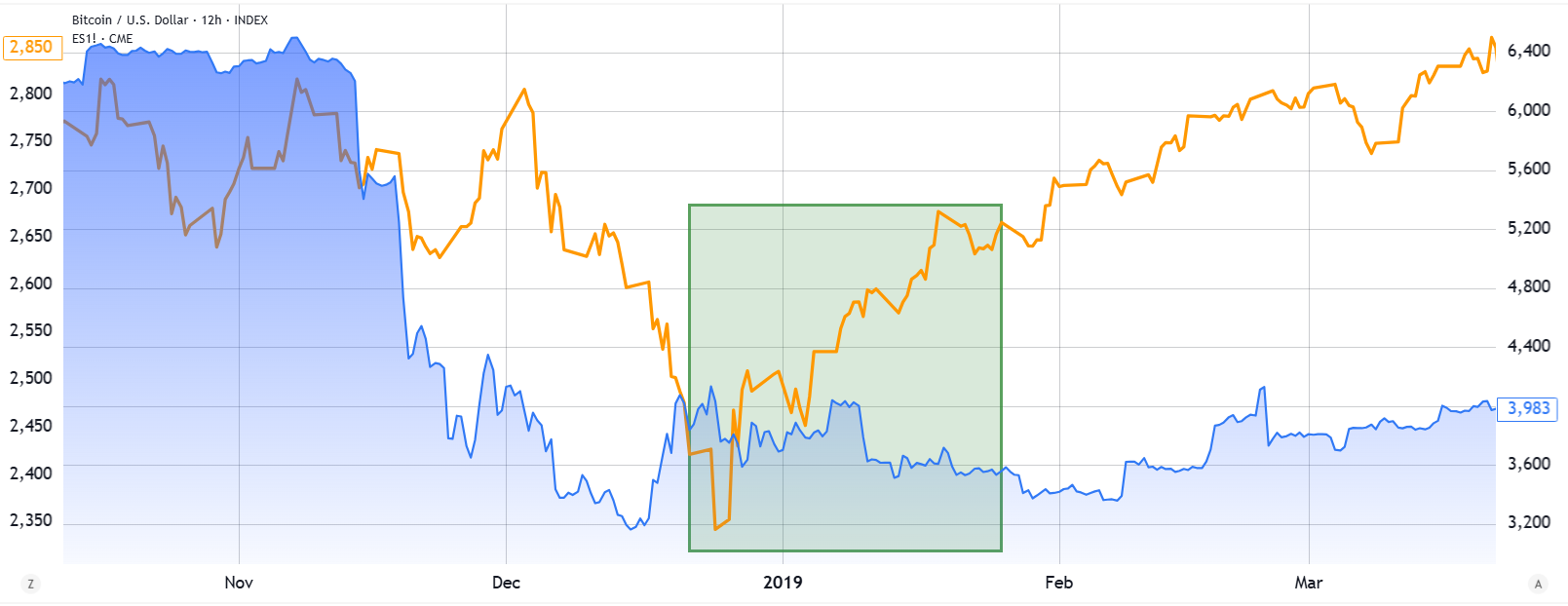
Bitcoin Surges Amid US Government Shutdown: How Long Will the Upsurge Last?
Traders question whether Bitcoin's recent rise amidst the US government shutdown can be sustained in light of historical volatility.
Key Insights:
- Yields from US 10-year Treasuries have decreased, reflecting a rise in risk aversion and a demand for secure assets.
- Spot Bitcoin ETFs attracted inflows of $430 million while equity markets remained subdued, suggesting a possible separation from traditional market trends.
Bitcoin (BTC) reached its highest point in two weeks on Wednesday following the federal government shutdown in the United States. Traders, however, remain cautious, recalling how the 2018 shutdown led to a sell-off driven by fears of a slowing economy.
With no resolution in sight, federal agencies have initiated contingency protocols, leading to a large portion of the workforce being furloughed. Focus is now on the duration of the shutdown, with another Senate vote slated for Wednesday.
The administration under Trump has expressed that it may consider mass layoffs if no agreement is achieved, a situation that has made traders more risk-averse.
 US 10-year Treasury yield vs. Bitcoin/USD
Source: TradingView / Cointelegraph
US 10-year Treasury yield vs. Bitcoin/USD
Source: TradingView / Cointelegraph
Yields on the US 10-year Treasury dropped on Wednesday, illustrating that traders are willing to settle for lower returns in exchange for the security of government-backed debt. Gold similarly surged to an all-time high of $3,895 per ounce, indicating stronger demand for traditional hedges.
Initially, the shutdown seemed to offer a transient boost to Bitcoin, but concerns linger regarding the sustainability of this growth. The US stock market showed little immediate response, although pressure stemmed from ADP data indicating a decrease of 32,000 private payrolls in September, alongside a revision of August’s figures revealing a net loss of 3,000 jobs.
Bitcoin’s 2018 Shutdown Experience
During the US government shutdown in December 2018, Bitcoin experienced a 9% decline. Currently, the economic slowing could quickly manifest as government expenditure halts abruptly and the issuance of official data is delayed.
 S&P 500 futures vs. Bitcoin/USD in 2018-19
Source: TradingView / Cointelegraph
S&P 500 futures vs. Bitcoin/USD in 2018-19
Source: TradingView / Cointelegraph
The US stock market faced a 12% correction just 10 days before the December 22, 2018 shutdown, but it fully rebounded within a month. Those investors who held their assets and looked beyond short-term volatility ultimately benefited.
Conversely, Bitcoin faced a slightly negative response to the December 2018 shutdown, with prices decreasing from $3,900 to $3,550 throughout the 35-day impasse. At the time, the cryptocurrency was contending with more significant pressures, having already dropped 42% in the two weeks preceding November 25, 2018. Analysts suggested that stricter regulatory actions triggered the abrupt sell-off.
In October 2018, the Financial Action Task Force (FATF) updated its regulations to encompass virtual asset activities, including cryptocurrency exchanges and particular wallet providers, focusing on Anti-Money Laundering and counter-terrorism financing.
The $430 million in net inflows into spot Bitcoin ETFs on Tuesday, coupled with the asset’s recent divergence from equities, has bolstered its status as an independent hedge. These funds now handle nearly $147 billion in assets, in contrast to gold which, within a $26 trillion market, controls $461 billion via ETFs.
The prevailing circumstances suggest the government shutdown could be beneficial for Bitcoin over the next month, despite the anticipated economic weakness impacting traditional markets. Ongoing corporate interest in Bitcoin as a reserve asset is likely to significantly contribute to a favorable trend during this period of increased uncertainty.



